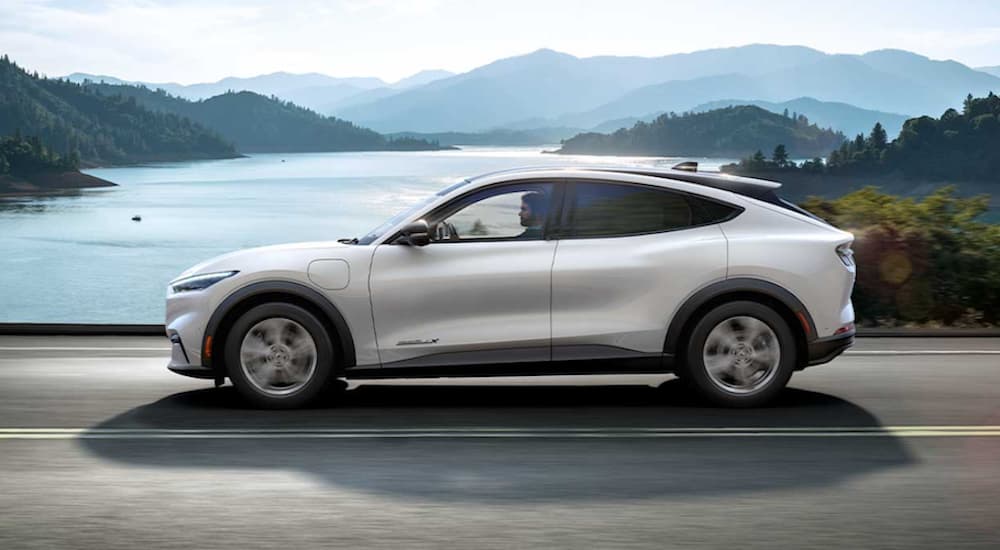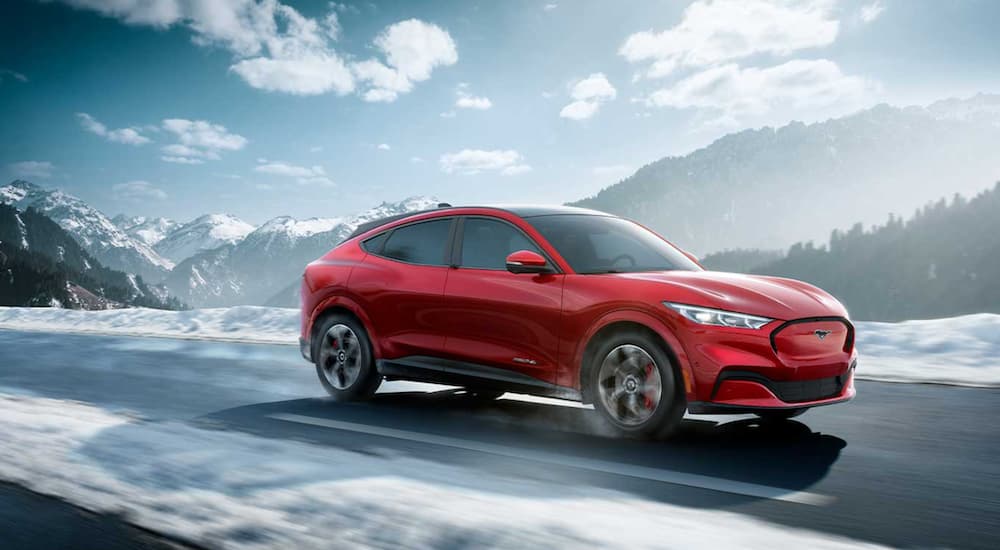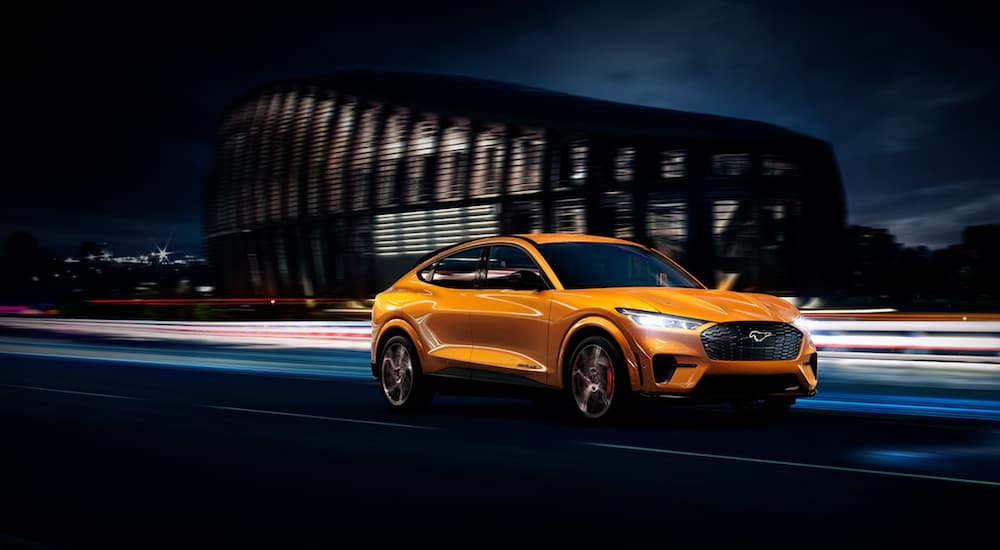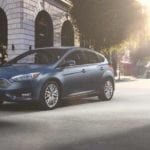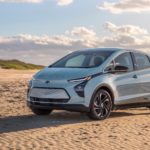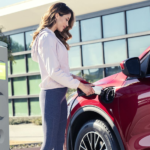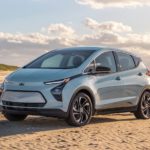The media world is ablaze with Ford CEO Jim Farley’s recent comment, “We’re not going to cede the future to anyone,” as stated on CNBC the day after Ford announced its fourth-quarter revenue. Why does anyone care that a car manufacturer CEO made a statement that could just be a bold remark? Because he made the statement in reference to electric vehicles. Ford, like many other car manufacturers, is ramping up its plans to deliver EVs to a public that is getting hungrier for emissions-free transportation. Buyers are increasingly searching for electric car dealers in their regions, and much of the interest is sparked by a larger population of current owners of EVs.
Ford Is Looking to the FutureE;
It wouldn’t be an interesting statement if Farley made it about gas-powered trucks or SUVs. Except that, in a way, he did. In a sort of by-blow, Ford also recently announced it is increasing the investment in EV development from the previous $11.5 billion promised to a nearly double $22 billion. While it’s no secret that Ford has been tangling horns with Tesla in a race to create electric vehicles the public actually wants to drive, doubling down on EVs is a big move. With Ford having released a hybrid version of the F-150 with plans for an all-electric version coming in the next few years, this is yet another step towards making a big impact on the automotive market. Ford has held the number one slot in truck sales for the last 40 years, and this is a calculated risk the company has made openly as an effort to draw EV interest in a segment where they already have an outstanding reputation.
Though the news of a bigger investment is getting the media hopped up about EV developments, it may be more telling to look into what Ford is already doing to bring EVs into daily life. Right now, buyers can place orders for the much-anticipated release of the 2021 Mustang Mach-E, an all-electric SUV inspired by the Mustang. With the capability to go from zero to 60 in 3.5 seconds and an estimated maximum driving range of 300 miles, Ford has upped the ante for sports car and SUV enthusiasts in one single swoop.
Also, for 2021, Ford made the F-150 available with a hybrid engine that it says is “class-exclusive” and can tow up to 12,700 pounds. This is a way to crack open the door to EV sales when the F-150 goes all-electric. Next on deck is the 2022 E-Transit, which will be an all-electric cargo van. But Ford has been working studiously on more than just electric vehicle development. The Blue Oval has expanded its autonomous vehicle program to several cities in the US and has just announced a plan to be emissions-free in Europe by 2026. There are other plans in the works, too, but looking deeper at what Ford is doing with autonomous vehicles may tell a fuller story about how Ford expects to shape its future.
Autonomous Vehicles in American Cities
Ford published a blog post on Medium in early March of 2021 that cited the autonomous vehicle program in Miami-Dade is celebrating its third year of operations. The program is actually a side hustle business for the Ford Motor Company, which is partnered with Argo AI to test and build a delivery business and passenger transport platform. The business began in Miami-Dade with simulated test vehicles that were made to look like the same vehicles Ford would use autonomously. Several phases of the process incorporated the vehicles being driven by humans but behaving as they would if being driven autonomously, to being semi-autonomous, and then fully autonomous with a driver still present.
Thus far, Ford has delivered groceries, flowers, prepared food, and other goods in specified areas of Miami, chosen for its fast-paced traffic combined with high numbers of pedestrians and bikes. According to Ford, this challenging traffic scenario was necessary to develop a fully automated vehicle that could respond to any kind of situation reliably. Currently, Ford is expanding its fleet to be housed in three separate locations in Miami in order to roll out the next phase of the pilot program: ride-hailing services. One particular locale for the expanding fleet is well-chosen to be built near the Miami airport, a place certain to garner business from travelers who need rides after arriving in town.
All the excitement in Miami has also spread to testing vehicles in Palo Alto, Pittsburgh, Detroit, and Washington D.C. Pilot programs in each of these cities are expanding the data Ford is gathering about interactions people have with their autonomous vehicles. But the focus hasn’t all been on hustling more business, with Ford utilizing its fleet to deliver free school supplies and fresh produce to families in South Beach and Little Havana in an effort to provide relief during the pandemic. Using autonomous vehicles meant the service could be conducted contact-free for safer delivery of much-needed food and supplies for low-income families.
The development of a new fleet in Miami seems to be getting a positive response from the local government and businesses that have struck up a partnership with Ford. No doubt, the businesses which currently offer delivery and driving services in Miami are probably concerned about the future of their profitability, but the autonomous driving business has already supported 60 jobs for the city with more on the horizon. A full fleet of vehicles will require maintenance on many levels, from monitoring the AI programs to managing the cash flow and keeping the vehicles clean and functioning as they should. In 2022, the program is expected to utilize Ford Escape hybrids as it expands, but there is no mention of whether or not these vehicles will be fully electric in the future, a promise GM has already made loud and clear for its plan to produce autonomous fleets.
Future Plans for Electric Vehicles
Like most of the heavy-hitting car manufacturers, Ford has plans to continue the development of electric vehicles. At the moment, Ford has two platforms it expects to utilize for the EVs it wants to build, which will include cars, trucks, crossover SUVs, and fleet vehicles. One of the current problems manufacturers need to solve is battery production, which may become problematic in terms of sourcing the materials needed for the batteries when demand dramatically increases. GM has come out with its Ultium platform, which sources the majority of its materials for the batteries from the US and also made the battery packs stackable to accommodate any size vehicle. Batteries in most of today’s EVs are bulky and heavy, often taking up space in passenger or cargo areas. Having to find the space in the vehicle to house the large batteries is one of the issues the car industry has worked to change for several decades.
Whether by fortune or chance, Ford may be able to bank on the fact that the market trends in the US are leaning toward crossover SUVs while sedan sales drop. Brands like Buick have already dropped their sedan production completely, and Chevy is scaling back sedan production significantly. In this climate, the Mach-E stands to do very well for those who can afford the steep cost of the pricey sports SUV, though the excitement of the capability – including its testing in cold climates that plummet to -40 degrees – is very promising. With the size of an SUV, it should be much easier to house a bulky battery without sacrificing passenger or cargo space. Whatever Ford decides to do with their vehicles in the future, we look forward to seeing it. With all this exciting new innovation and competition, it may be time to turn your attention to electric vehicles.
